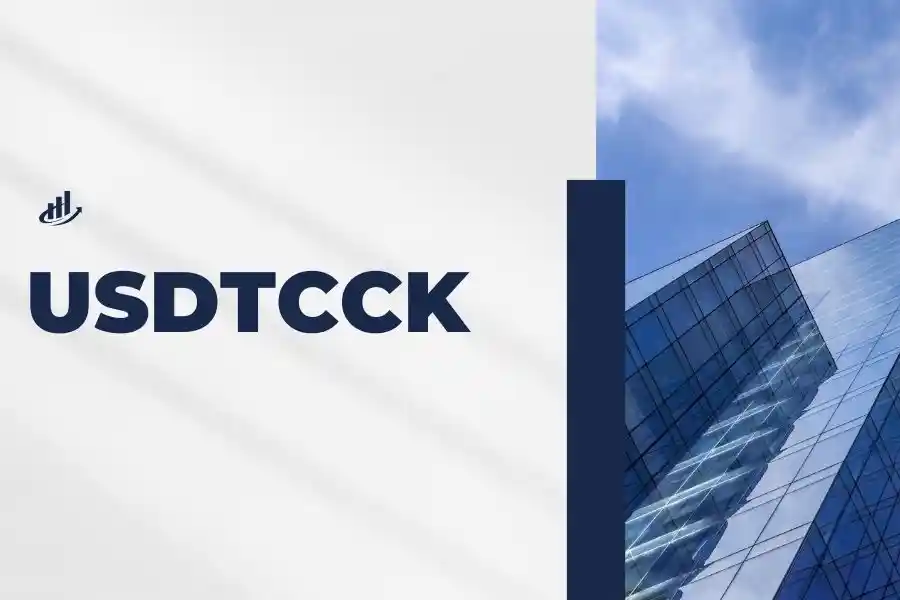Understanding USDTCCK: A Comprehensive Analysis of Stablecoins and Their Influence on the US Economy
In the realm of cryptocurrency, stability has emerged as a pivotal factor alongside innovation. Stablecoins, a class of digital assets, have gained significant traction for their unique ability to blend the advantages of cryptocurrencies with the stability of traditional fiat currencies. Among these stablecoins, USDTCCK has garnered attention within the United States for its potential impact on the economy. In this article, we delve into the intricacies of USDTCCK, examining its functionality, implications, and broader implications for the US economic landscape.
Introduction to USDTCCK
USDTCCK, an acronym for United States Dollar Tether Central Cash Key, stands as a prominent example of stablecoins pegged to the US dollar. Unlike traditional cryptocurrencies like Bitcoin or Ethereum, which are prone to significant price volatility, stablecoins like USDTCCK strive to maintain a steady value relative to fiat currencies. This stability is achieved through mechanisms such as collateralization or algorithmic adjustments.
Mechanics of USDTCCK
The operational framework of USDTCCK is straightforward. Each unit of USDTCCK in circulation is backed by an equivalent amount of US dollars held in reserve. This ensures a stable value and allows for a 1:1 redemption with the US dollar. Termed as an “absolutely secured stablecoin,” this model necessitates rigorous audits to verify the parity between the reserve and the circulating supply of USDTCCK.
In addition to collateral reserves, USDTCCK, along with other stablecoins, may employ algorithms or smart contracts to dynamically adjust token supply. This adaptive mechanism enables the stablecoin to respond to fluctuations in demand while upholding its peg to the US dollar.
Implications for the US Economy
Financial Inclusion
Stablecoins like USDTCCK have the potential to foster financial inclusion by providing access to digital financial services, particularly in underserved regions. With USDTCCK, individuals with internet connectivity can participate in the digital economy, conducting transactions and managing finances without reliance on traditional banking infrastructure.
Efficiency and Transaction Costs
Traditional cross-border transactions often entail high costs and prolonged processing times. Stablecoins offer a solution by facilitating near-instantaneous transactions on a global scale at minimal fees. This efficiency can streamline international trade, remittance, and cross-border payments, thereby reducing friction in the global financial system.
Hedging Against Volatility
For entities seeking to mitigate the volatility associated with traditional cryptocurrencies, stablecoins serve as a viable option. USDTCCK, in particular, provides stability comparable to the US dollar while harnessing the benefits of blockchain technology. This feature shields users from abrupt price fluctuations, preserving the value of their assets over time.
Regulatory Uncertainty
Despite their potential benefits, stablecoins, including USDTCCK, face regulatory ambiguity in many jurisdictions. Regulatory authorities are grappling with classification and oversight, raising concerns regarding investor protection, currency stability, and compliance with anti-money laundering (AML) and know-your-customer (KYC) regulations.
Systemic Risks
The widespread adoption of stablecoins poses systemic risks to the financial ecosystem, especially if issuers lack adequate reserves or if vulnerabilities exist within the underlying technology. A loss of confidence in a stablecoin could precipitate a rapid withdrawal of funds, potentially triggering a liquidity crisis or market disruption.
Competition with CBDCs
The emergence of stablecoins has spurred central banks worldwide to explore the issuance of central bank digital currencies (CBDCs). In the US, the Federal Reserve is actively researching CBDCs as a complement to existing forms of currency. The proliferation of stablecoins may complicate CBDC adoption and challenge prevailing economic policy frameworks.
Conclusion
USDTCCK and other stablecoins represent a significant innovation in the global financial landscape, offering the advantages of cryptocurrencies alongside fiat currency stability. However, their widespread adoption raises critical questions regarding regulation, financial stability, and the future of currency.
As stablecoins gain traction, stakeholders must collaborate to address these challenges and ensure the integrity of stablecoin ecosystems. Only through concerted efforts can stablecoins realize their potential as a transformative force in the US economy and beyond. You can also know about Symley by going through that blog.
FAQs
How does USDTCCK differ from traditional cryptocurrencies?
USDTCCK, unlike traditional cryptocurrencies such as Bitcoin or Ethereum, is designed to maintain a stable value relative to fiat currencies like the US dollar. While traditional cryptocurrencies are known for their price volatility, stablecoins like USDTCCK strive to minimize fluctuations, making them more suitable for everyday transactions and hedging against market volatility.
What measures are in place to maintain the stability of USDTCCK?
The stability of USDTCCK is maintained through mechanisms such as collateralization and algorithmic adjustments. For every unit of USDTCCK in circulation, there is an equivalent amount of US dollars held in reserve, ensuring a 1:1 peg to the US dollar. Additionally, periodic audits are conducted to verify the parity between the reserve and the circulating supply of USDTCCK.
What role do stablecoins play in fostering financial inclusion?
Stablecoins like USDTCCK have the potential to foster financial inclusion by providing access to digital financial services for individuals who are underserved by traditional banking infrastructure. With stablecoins, people with internet access can participate in the digital economy, conduct transactions, and manage finances without relying on conventional financial institutions.
What are the regulatory challenges associated with stablecoins like USDTCCK?
Stablecoins like USDTCCK face regulatory uncertainty in many jurisdictions, including concerns about classification, oversight, and compliance with anti-money laundering (AML) and know-your-customer (KYC) regulations. Regulatory authorities are grappling with how to regulate stablecoins effectively to ensure investor protection, currency stability, and financial system integrity.
How might the proliferation of stablecoins impact the adoption of CBDCs?
The proliferation of stablecoins could impact the adoption of central bank digital currencies (CBDCs) by presenting both opportunities and challenges. While stablecoins demonstrate the demand for digital currency solutions and may encourage central banks to explore CBDC issuance, they also raise questions about monetary policy, financial stability, and the coexistence of private and public digital currencies.
Central banks, including the Federal Reserve in the US, are actively studying the implications of stablecoins on CBDC adoption and the broader economic landscape.







One Comment